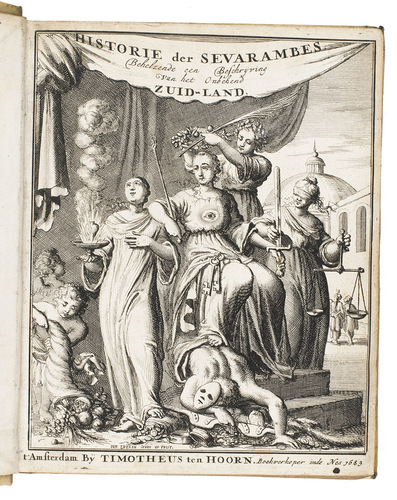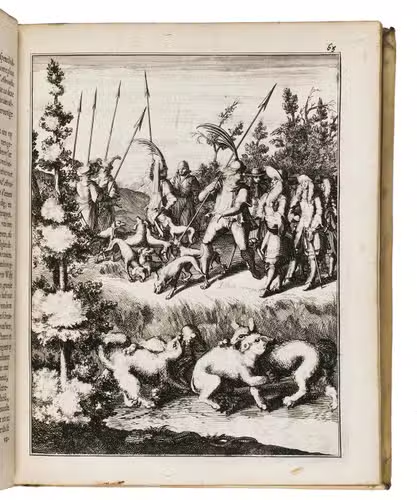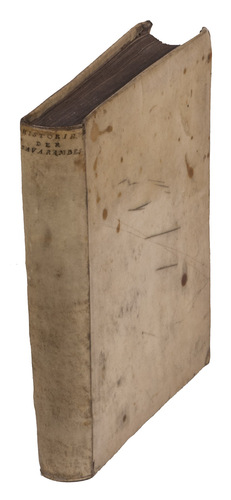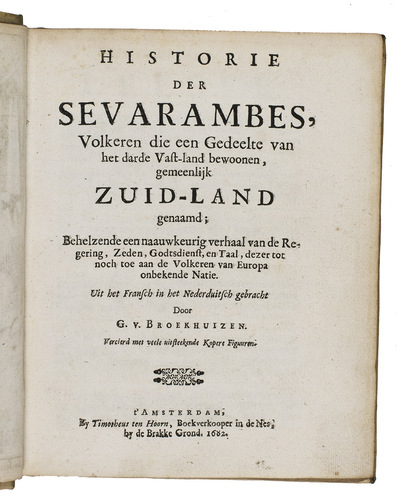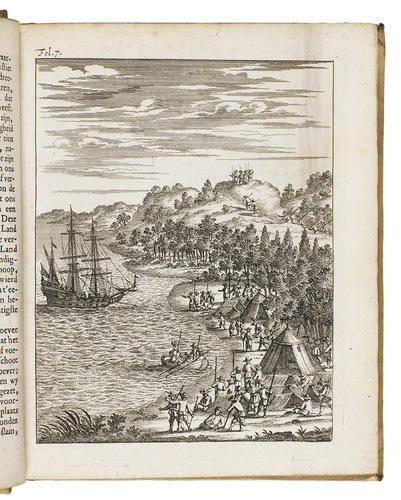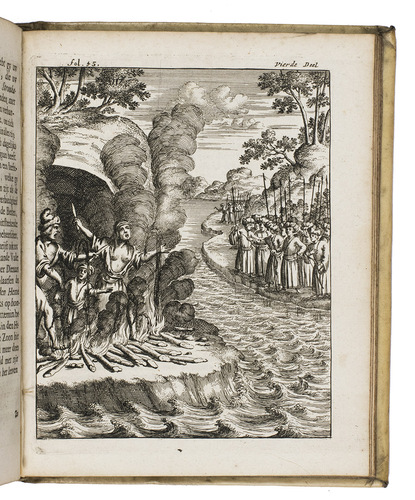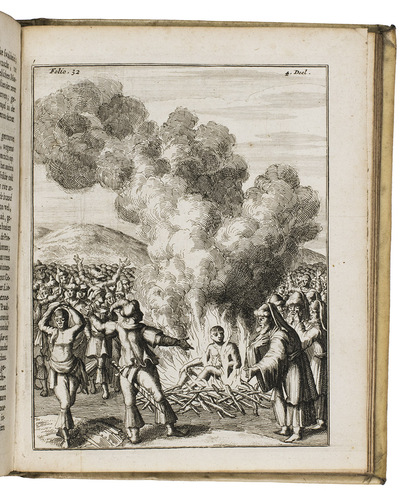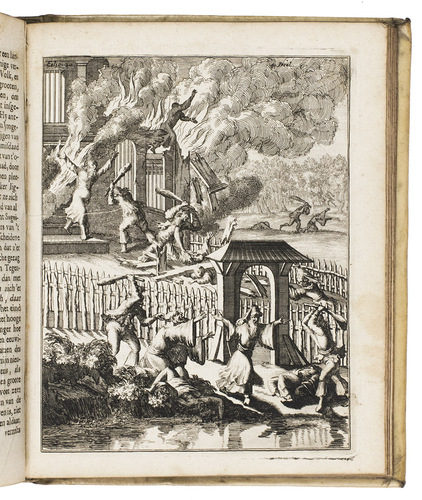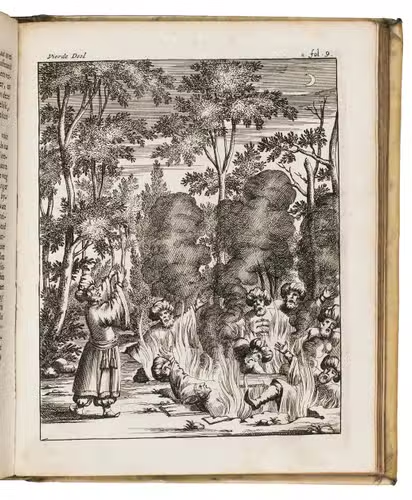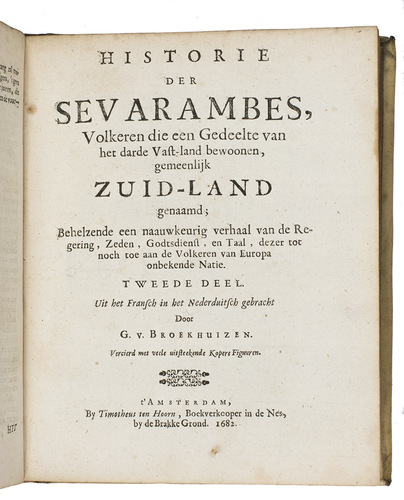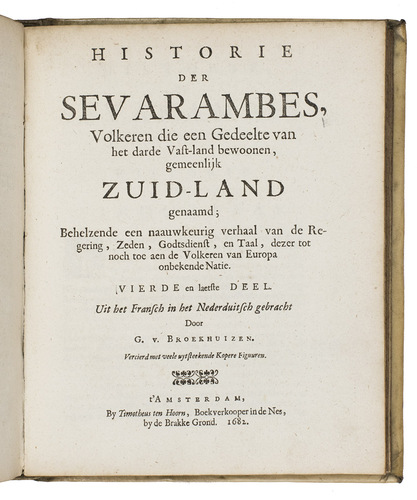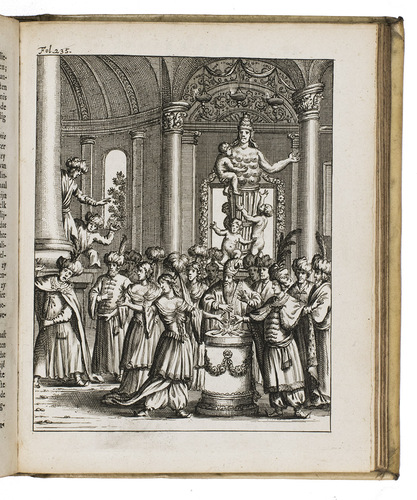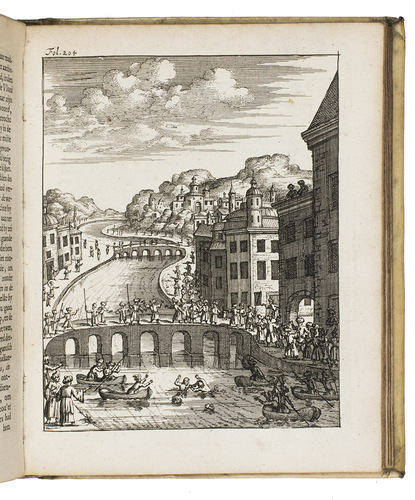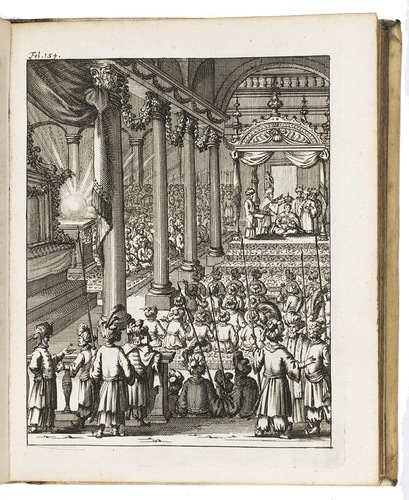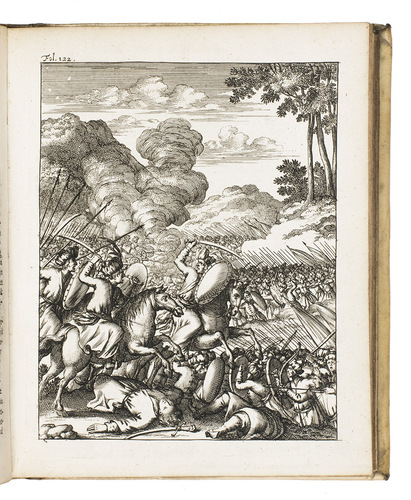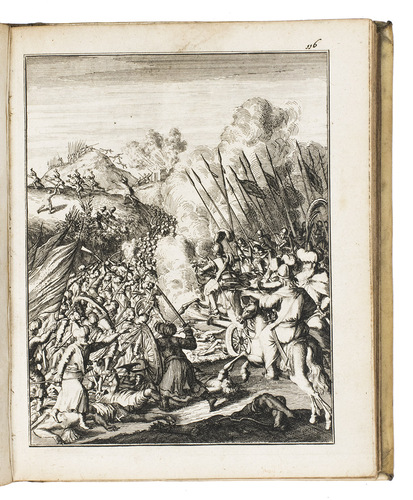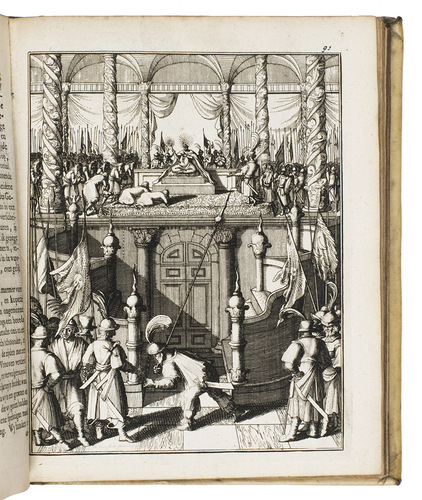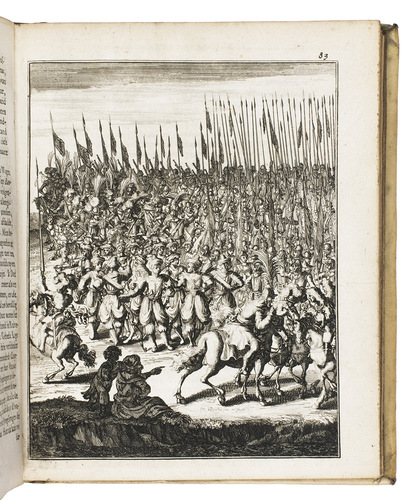VAIRASSE D’ALAIS, Denis and Gerard van BROEKHUIZEN (translator).
Historie der Sevarambes. Volkeren die een gedeelte van het darde vast-land bewoonen, gemeenlijk Zuid-land genaamd...
Amsterdam, Timotheus ten Hoorn, 1682. 4 parts in 1 volume. 4to. With an engraved title-page by Jan Luiken (dated 1683), 16 engraved plates (including 4 signed by J. vanden Aveele), some decorated woodcut initials, ornamental woodcut tailpieces and three divisional title-pages for parts 2-4. Contemporary vellum. [1], [1 blank], [1], [1 blank], [12], 253, [1 blank]; 96 pp.
€ 7,500
Very rare, the first fully illustrated edition of this seventeenth-century imaginary voyage to western Australia, based on the story of the wreck of the VOC ship Vergulde Draeck in 1656. The plates are thus early - if imaginary - depictions of the Australian coast, and include two coastal scenes depicting the first meeting with the local population, the Australian court, and the fabulous fauna.
The importance of the detailed and inventive illustrations has been overlooked: after the various editions of Pelsaert, this is the second major work to depict life and conditions on the Australian mainland, however fancifully. This work also has an important connection with Vlaminghs exceedingly rare Journaal wegens de Voyagie of 1701, as Vlaminghs very real voyage to Australia in 1696-7 only made it separately into print as a companion volume to the second Dutch edition of this imaginary work.
The story is based on the 1656 wreck of the Vergulde Draeck, which ran aground on the coast north of modern-day Perth. Seventy-five of the crew and passengers made it ashore. The captain Pieter Albertsz despatched a crew of seven in a small boat to Batavia and a rescue expedition was mounted, but found no trace of the survivors; the possibility that some of the crew survived on mainland Australia was an enticing fiction. Vairasse openly used this real-life voyage as the model for his own, having the similarly named Goude Draak wreck in western Australia the same year as its namesake. After the ship founders, some seventy-four women and three hundred and seven men survive on the barren shore, from whence they journey to the land of the Sevarambes, an Australian utopia.
The work, which also borrows features from the wreck of the Batavia, is one of the most important imaginary voyages to Terra Australis, and is cited as a direct influence on Swift. The book thus forms an important link in the long history of seventeenth-century Dutch exploration of the west Australian coast, not least because it dates from a time when the lines between imaginary and real voyages were blurred.
This Dutch edition was translated by Gerard van Broekhuizen the same year as the French collected edition, and seemingly based on the French text. The frontispiece is by Jan Luiken, and the plates (four signed) by Johannes van den Aveele (or Avelen).
With the bookplate of Buijnsters-Smets on the front paste-down and the owner's inscription of M Buisman ("M. Buisman 27/12 '32") on the first free endpaper. The binding is slightly stained and scratched, slightly water stained in the head margin and occasionally very slightly foxed. Overall in very good condition. Buisman 2290 (Buisman sale 751); Davidson, p. 43; Klaversma/ Hannema 700; Scheepers I, 669; Van Eeghen/Van der Kellen 55; STCN 850278570 (6 copies); cf. Landwehr VOC 373 (note); Tiele, Bibl. 487 (1701 edition); Imaginary Voyages 41 (3rd French ed., 1682).
Related Subjects:


















